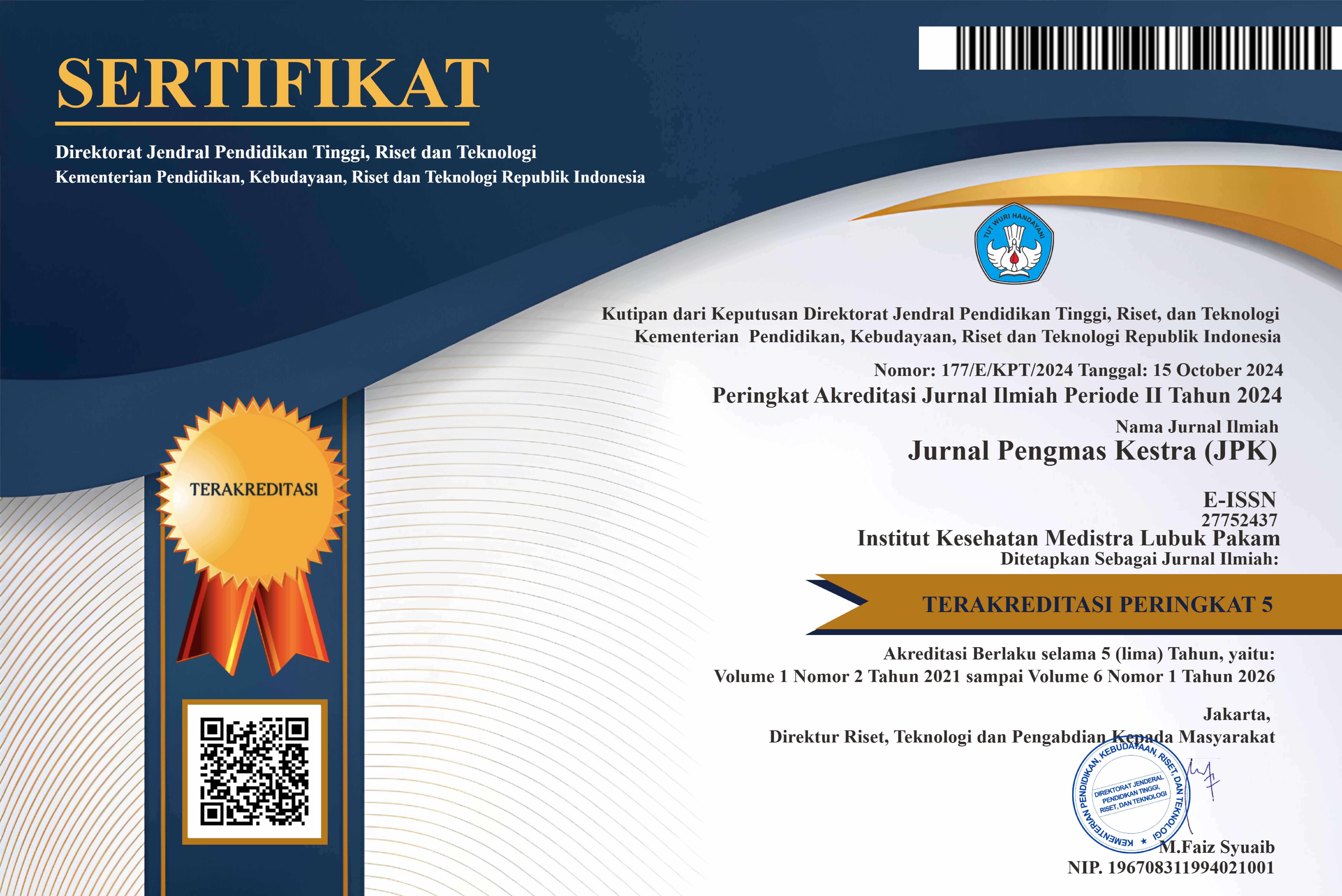STAFF EMPOWERMENT REGARDING THE IMPLEMENTATION OF INTERPERSONAL COMMUNICATION IN OUTCOME PATIENTS AT GRANDMED HOSPITAL LUBUK PAKAM
DOI:
https://doi.org/10.35451/jpk.v2i1.1159Keywords:
Interpersonal communication, hospitalAbstract
In human interactions, communication is a highly special and important activity. It is a complex process that incorporates behavior and enables people to communicate to one another and the environment around them. In this study, the authors sought to understand how the internal personnel of Grandmed Lubuk Pakam Hospital interacted with patients. This study is a qualitative descriptive one, and the methods used for data collecting include in-depth interviews, non-participant observation techniques, and literature review. A purposive sample method was used to choose the informants. Analysis of the data acquired using the Miles and Huberman interaction model, and source triangulation was used to determine the accuracy of the data itself. Based on the data, it can be concluded that applied interpersonal communication is divided into four stages: pre-interaction, action, evaluation, and documentation. The staff employs particular strategies and attitudes when speaking with patients. Interpersonal communication depends on how staff and patients get along. The ability to take meaningful action for patients and helping patients clarify and lessen the weight of their feelings and ideas are two aims that staff and patients collaborate to attain through a strong nurse-patient relationship.
Downloads
Published
Issue
Section
License
Copyright (c) 2022 JURNAL PENGMAS KESTRA (JPK)

This work is licensed under a Creative Commons Attribution 4.0 International License.
Copyright in each article is the property of the Author.




















